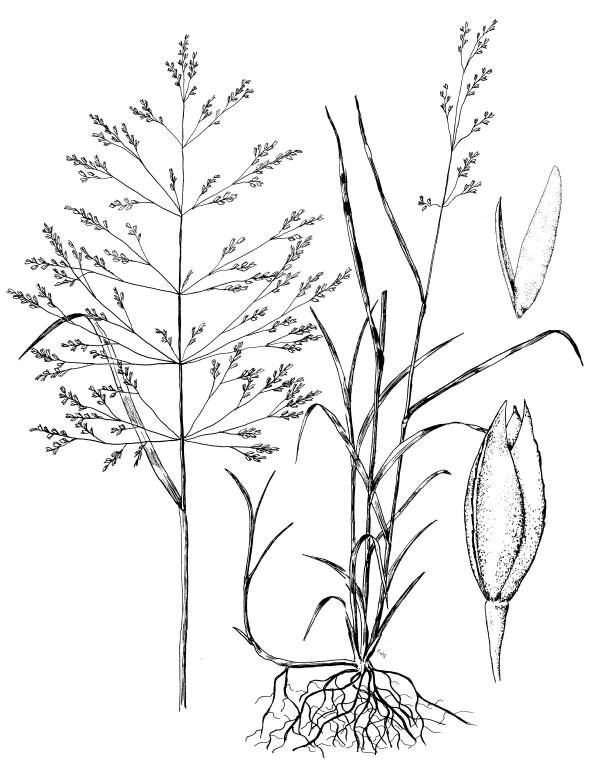
Muhlenbergia asperifolia (Nees and Mey.), Alkali Muhly Habit: Pale or glaucous perennial with slender scaly rhizomes, tufted in large patches or colonies. Culms: Branching at the base, spreading, slender, compressed, 10-40 cm. tall, the branches ascending or erect. Blades: Flat or involute towards the tip, crowded, scabrous, mostly 2-5 cm. long, 1-2.5 mm. wide. Sheaths: The upper shorter or about as long as the internodes, the lower short and crowded, compressed-keeled. Ligule: Firm, erose, 0.5-1 mm. long. Inflorescence: An open diffuse purplish panicle, 5-15 cm. long, about as wide at maturity breaking away. The capillary scabrous, branches finally widely spreading, with a few scattered spikelets at the ends of the branches, pedicels mostly 10-20 mm. long. Spikelets: 1-flowered, flower perfect, occasionally 2-flowered. Rachilla disarticulating above the glumes. Glumes: Subequal, acute, from half to nearly as long as the spikelet, acute, often bristly pointed, thin, scabrous on the keel. Lemmas: Thin, broad, 3-nerved, minutely mucronate from an obtuse apex, with a short callus. Palea: Thin, nearly as long as the lemma, subequal, 2-toothed. Fruit: Grain closely enveloped by the lemma. Habitat: Damp or marshy, often alkaline soils along streams and ditches. Kansas Range: West three fifths. Remarks: The grain is often transformed in a globular body of the fungus, Tilletia asperifolia Ell. & Everh.